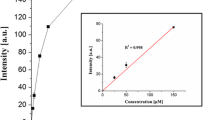Summary
The uptake of glucocorticoids by cultured human skin keratinocytes and fibroblasts was found to be a rapid, temperature-sensitive process. All glucocorticoids tested accumulated in the cells, and the ratio between the intracellular and extracellular concentrations (ci/co ratio) was higher than 1. For most of the glucocorticoids under study there was good correlation between the lipophilicity and the rate of uptake. Since the uptake of glucocorticoids seems to be unsaturable in the concentration range used and no competition was observed between these compounds for entry into the cells, it may be assumed that the uptake of glucocorticoids is essentially a simple diffusion process based on a distribution of glucocorticoids between a lipid-rich phase and water. The analysis of the uptake process revealed that the entry of glucocorticoids into cultured human skin fibroblasts and keratinocytes is a nonmediated passive diffusion process that involves two distinct steps: a rapid, non-specific, high-capacity association to the cell membrane followed by a slower internalization process associated with a stronger binding of glucocorticoids within the cell.
Similar content being viewed by others
References
Allera A, Rao GS, Breuer H (1980) Specific interaction of corticosteroids with components of the cell membrane which are involved in the translocation of the hormone into the intravesicular space of purified rat liver plasma membrane vesicles. J Steroid Biochem 12:259–266
Berliner DL (1964) Biotransformation of corticosteroids as related to inflammation. Ann NY Acad Sci 116:1078–1083
Brinkman AO, Mulder E, van der Molen HJ (1972) Model studies with erythrocytes on the initial steps of cellular uptake and binding of steroids. J Steroid Biochem 3:601–615
Fant ME, Harbison RD, Harrison RW (1979) Glucocorticoid uptake into human placental membrane vesicles. J Biol Chem 254:6218–6221
Giorgi EP, Stein WD (1981) The transport of steroids into animal cells in culture. Endocrinology 108:688–697
Green H (1978) Cyclic AMP in relation to proliferation of the epidermal cell: A new view. Cell 15:801–811
Gross SR, Aronow L, Pratt WB (1970) The outward transport of cortisol by mammalian cells in vitro. J Cell Biol 44:103–116
Harrison RW, Yeakley J (1979) Evidence for glucocorticoid transport into At-20 cells. Selective effect of a sulfhydryl inhibitor on uptake. Mol Cell Endocrinol 15:13–18
Harrison RW, Fairfield S, Orth DN (1974) The effect of cell membrane alteration on glucocorticoid transport through the target cell membrane. Biochem Biophys Res Commun 61:1262–1267
Harrison RW, Fairfield S, Orth DN (1977) The effect of cell membrane alteration on glucocorticoid uptake by the AtT-20/D-1 targed cell. Biochim Biophys Acta 466:357–365
Lin S, Spudick JA (1974) Biochemical studies on the mode of action of cytochalasin B. J Biol Chem 249:5778–5783
Mayer M, Nir S, Molholland RD, Rosen F (1976) Effect of temperature on glucocorticoid uptake and glucocorticoid receptor translocation in rat thymocytes. Arch Biochem Biophys 176:28–36
Munck A, Brinck-Johnsen T (1968) Specific and nonspecific physicochemical interactions of glucocorticoids and related steroids with rat thymus cells in vitro. J Biol Chem 243:5556–5565
Plageman PGW, Erbe J (1976) Glucocorticoids uptake by simple diffusion by Reuber and Novikoff rat hepatoma cells. Biochem Pharmacol 25:1489–1494
Ponec M, de Kloet ER, Kempenaar JA (1980) Corticoids and human skin fibroblasts: Intracellular specific binding in relation to growth inhibition. J Invest Dermatol 75:239–296
Ponec M, Kempenaar JA, de Kloet ER (1981) Corticoids and cultured epidermal keratinocytes: Specific intracellular binding and clinical efficacy. J Invest Dermatol 76:211–214
Ponec M, Polano MK (1979) Penetration of various corticosteroids through epidermis in vitro. Arch Dermatol Res 265:101–104
Rao GS (1981) Mode of entry of steroid and thyroid hormones into cells. Mol Cell Endocrinol 21:97–108
Rheinwald JG, Green H (1975) Serial cultivation of strains of human epidermal keratinocytes. The formation of keratinizing colonies from single cells. Cell 6:331–344
Rousseau CG, Baxter JD (1976) Glucocorticond receptors. In: Baxter JD, Rousseau GG (eds) Glucocorticoid hormone action. Springer, Berlin Heidelberg New York, pp 50–77
Stein WD (1981) Permeability for lipophilic molecules. In: Bonting SZ, De Pont JJHHH (eds) Membrane transport. Elsevier North Holland, Biomedical Press, Amsterdam, pp 1–28
Author information
Authors and Affiliations
Rights and permissions
About this article
Cite this article
Ponec, M., Kempenaar, J.A. Biphasic entry of glucocorticoids into cultured human skin keratinocytes and fibroblasts. Arch Dermatol Res 275, 334–344 (1983). https://doi.org/10.1007/BF00417208
Received:
Issue Date:
DOI: https://doi.org/10.1007/BF00417208




